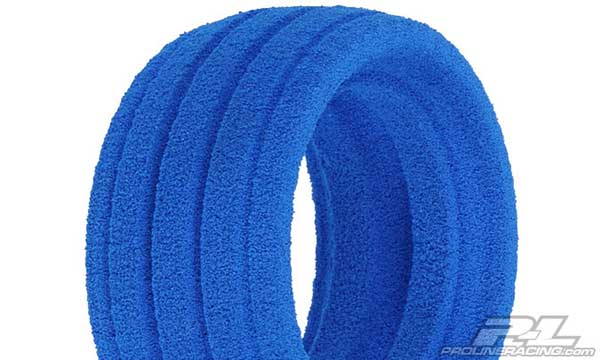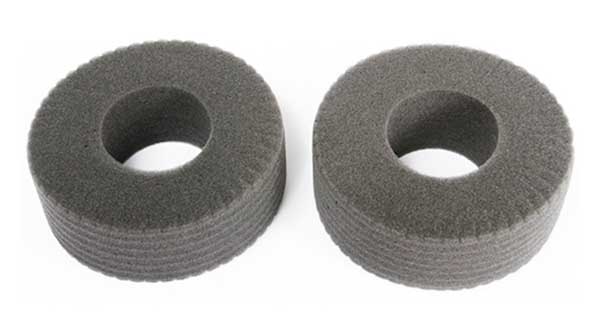Similar to air in full size cars, foam inserts are needed to help support the tire carcass from the inside and help it to keep its shape. But, unlike air the insert can be shaped and tuned or made from different materials in order to change its characteristics. For practical purposes, there are two types of foam inserts that we use in our cars (a few more, but rarely used), closed-cell foam and open-cell foams.

Pro-Line uses closed cell foam for their racing tires.
In closed-cell foams, during the forming process the gas forms pockets completely surrounded by a solid material. These foams are usually put in to molds and have unique shapes that also contribute to different handling characteristics. Because they are closed-cell, they prevent water from being soaked in. They also tend to hold up better over time and maintain their original shape better.

Although open cell foam inserts are common, their use in racing has almost completely been abandoned.
Open-cell foams were the ones usually supplied with the tires and at the time of purchase just a few years back and were often chosen to compliment the tire for most applications. They are cheaper to produce and are often cut out of larger pieces to a basic “donut” shape. In open-cell foam, the gas pockets connect with each other and become porous. This allows the foam to “breath.” They expand and contract easier as the tire runs on the surface or goes through the air. However, they break down easier and soak up water, so their use has almost completely been discontinued.
Which should you use? This is where it gets complicated. As a basic rule, as the tire carcass gets softer it will need more support to compensate. Denser foams help provide the needed support and prevent the tire from “folding over” as it corners. You’ll want to match the shape of the foam to the inside of the tire to prevent any pockets or voids. The inner diameter should be close fitting so that it doesn’t move around when driving (pro tip: when traction gets ultra-high, some pros glue or tape the inner part of the foam to the wheel to lessen the movement for an additional handling characteristic). You can also use a slightly softer foam for bumpy tracks or when traction is lower- similar to running with lower tire pressure in our full-size cars. A softer insert will allow the tire to distort more and improve its contact with the ground. However, there is always a compromise. Go too soft and the tire will feel floppy and “squirmy.” The tire will get lazy and inconsistent as it transitions between turns.
As mentioned above, closed-cell foams are often pre-shaped and expand and contract less, so they hold their original shape better over time and have the benefit of preventing water from soaking in. Open-cell foams are cheaper and have their own unique handling. Unfortunately, there is no silver bullet and you’ll have to do some experimenting and testing on your own to see what works best for you. Every tire has its own unique trait and the combinations used with wheels and inserts are almost endless. Hey, that’s what makes this process a lot of fun right?
The post Foam Inserts Explained appeared first on RC Car Action.



